Government mail service may be affected by the Canada Post labour disruption. Learn about how critical government mail will be handled.
Annual pruning ban in effect: April 1 to September 30
Report all suspect infected trees immediately to the STOPDED Hotline at 1-877-837-ELMS (3567)
Description
Elm tree – means any tree or part of a tree of the Ulmus genus and its cultivars, including the American, Siberian and Japanese elm. See also How to identify an elm tree.
Dutch elm disease – (referred to as DED) is a costly and deadly disease that affects all species of elm trees in Alberta. It is caused by a fungus that clogs the elm tree's water conducting system, causing the tree to die. The fungus is primarily spread from one elm tree to another by 3 beetle species:
- smaller European elm bark beetle (SEEBB) Scolytus multistriatus
- banded elm bark beetle (BEBB) Scolytus schevyrewi
- native elm bark beetle (NEBB) Hylurgopinus rufipes
The beetles are attracted to weak and dying trees, which serve as breeding sites. Once the beetles have pupated and turned into adults, they leave the brood gallery and fly to healthy elms to feed, transporting the fungus on their bodies from one tree to the next.
Under the Alberta Agricultural Pests Act (APA) Pest and Nuisance Control Regulation, both DED pathogens (Ophiostoma ulmi and Ophiostoma nova ulmi) – and the European and native elm bark beetles that carry them – are named declared pests.
All municipalities, counties and MDs in the province have the responsibility and authority to prevent and control DED under the APA. See DED – Responsibilities and authority.
Where it’s found
Alberta has the largest DED-free stand of American elm in the world. Alberta and British Columbia are the last 2 locations in North America that are free of DED. A province-wide 2017 American elm inventory identified at least 600,000 elms growing in Alberta municipalities, rural properties, shelterbelts and provincial parks.
In 1998, one elm tree in Wainwright was confirmed to have DED. The tree was immediately removed and burned. And in July 2020, the City of Lethbridge had 2 elm trees that tested positive for the disease; they were immediately removed and city staff surveyed all elms trees and elm firewood in the area for DED symptoms. This is considered an isolated case and eradication was successful.
Since 1994, however, the European elm bark beetle has been found throughout Alberta. And in 2006 the banded elm bark beetle was first found in Medicine Hat. The BEBB is now found in low numbers in municipalities across the province.
Update on Alberta Elm Wilt Causes
From 2016-2023, the Alberta Plant Health Lab (APHL) tested 200 elm trees across Alberta for DED and other elm diseases.
Using the latest molecular techniques, APHL determined that a fungus that was thought to be Dothiorella ulmi was actually Plenodomus tracheiphilus, causing the elm wilt symptoms.
This is of great interest to other research scientists, municipalities and industry, primarily because P. tracheiphilus is a major pathogen of citrus crops everywhere citrus is grown and all citrus species are affected. It has never been found on elm.
Key symptoms
Dutch elm disease is a fatal fungus that can affect all elm species in Alberta. The fungus clogs the elm tree’s water conducting system and will cause the tree to die quite quickly, usually within one or 2 seasons.
- Leaves on one or more branches suddenly wilt, droop and curl.
- Leaves turn yellow, then brown and shrivel, but stay on the tree; this is referred to as flagging’.
- DED symptoms can also be seen under the bark of infected branches. When the bark is peeled back, healthy elm wood is cream coloured. But when a tree is diseased, dark brown or red streaks can be seen in the infected sample.
- DED advances quickly and the affected branch will die as more of the tree becomes infected. You might see dead leaves falling out of season.
- If the tree is infected later in the summer, the leaves on the infected branch or branches will droop, turn yellow and drop prematurely. Late season infections are easily confused with normal seasonal changes in leaf color.
- Two other vascular diseases which are not as serious as DED (Verticillium wilt and Dothiorella wilt) can mimic the symptoms of DED so a sample from the infected area of the tree must be sent to the Alberta Plant Health Lab to confirm if DED is present. See submitting lab samples.
Figure 1. Early Symptoms of DED – green, wilting leaves
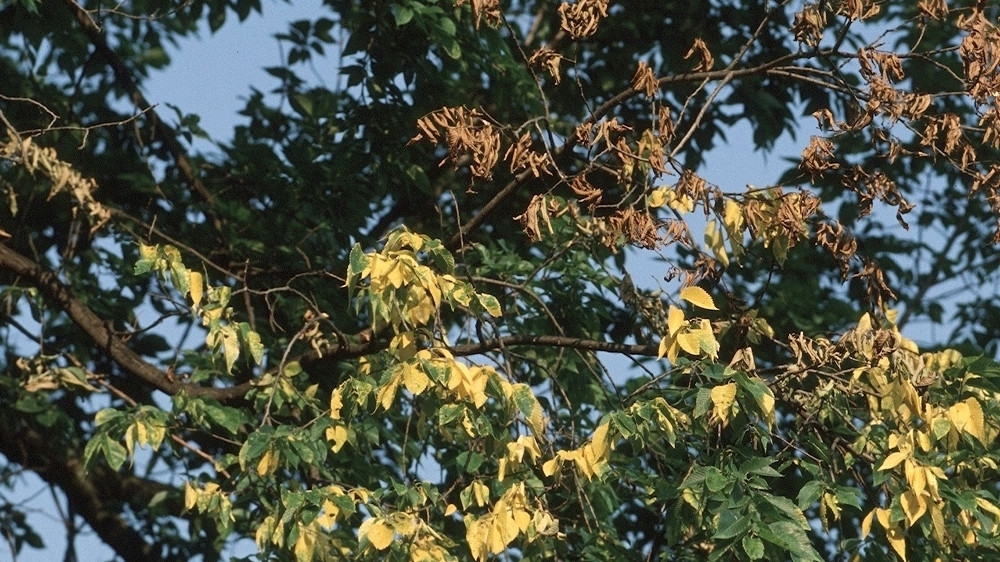
Credit: Joseph OBrien, USDA Forest Service, Bugwood.org
Figure 2. Mid-Summer – Clinging, brown, wilted leaves
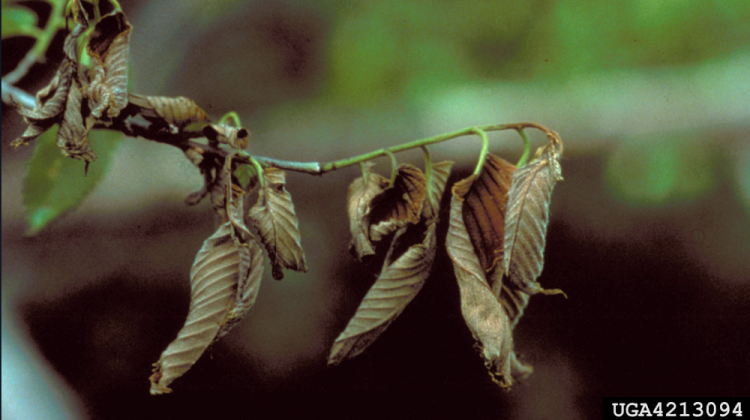
Source: Minnesota Department of Natural Resources - FIA , Minnesota Department of Natural Resources, Bugwood.org
Figure 3. American elms showing flagging
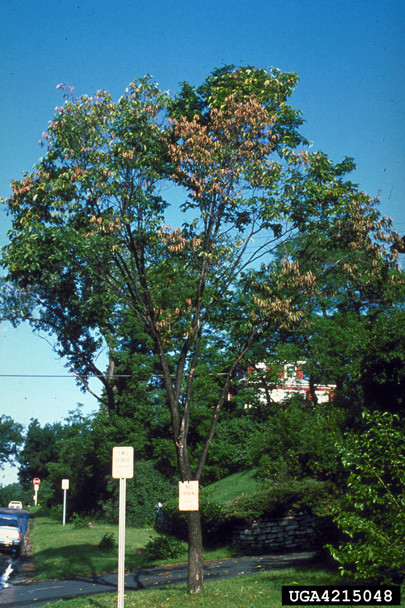
Figure 4. American elms showing flagging
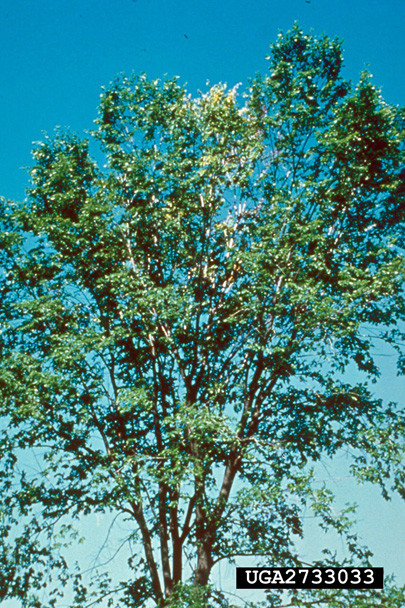
Figure 5. Staining of sapwood
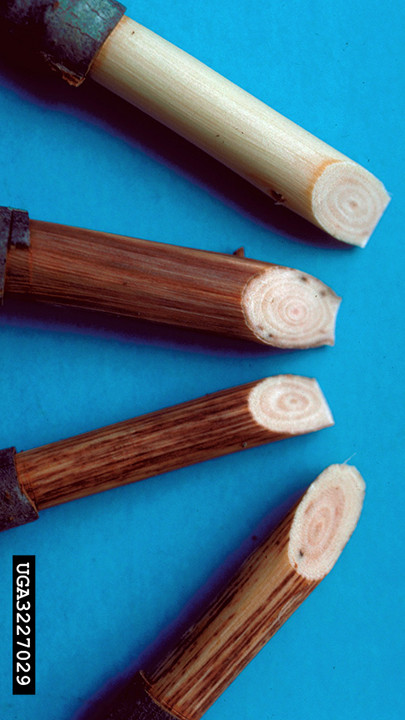
Figure 6. Staining of sapwood
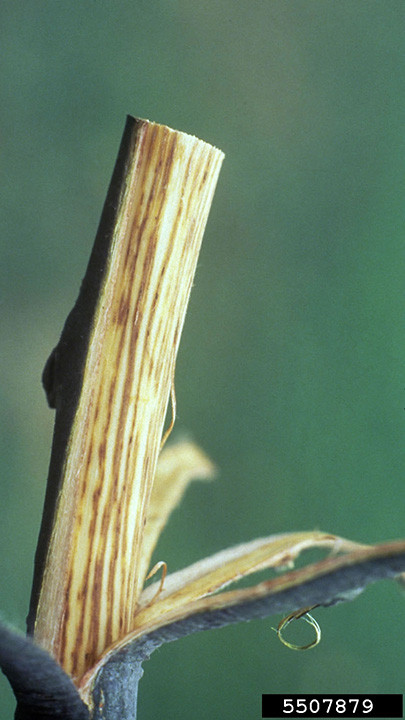
How it spreads
If you go camping, please do not transport firewood. Elm firewood is one of the largest spreaders of elm bark beetles that can carry DED. Beetles can hitch a ride on infected elm firewood and be carried by unsuspecting campers and homeowners. It is illegal to bring elm material into Alberta from a DED infected province such as Saskatchewan. See DED prevention and control.
DED is caused by a fungus that clogs the elm tree's water conducting system, causing the leaves to wilt and the tree to die, usually within 1 or 2 seasons. It doesn't infect other tree species. The disease can kill an individual elm tree in as little as 3 weeks. The whole population of elms in a community can easily be destroyed within a decade.
The fungus is spread from one elm tree to another mainly by 3 species of elm bark beetle: the smaller European, the banded and the native elm bark beetle. The beetles breed under the bark of dead or dying elm wood. The new generation of beetles emerge from a diseased tree. Carrying the fungal spores with them, the beetles infest healthy elms on which they feed, thereby spreading the disease.
Once the beetles have pupated and turned into adults, they leave the brood gallery and fly to healthy elms to feed, thus transporting the fungus on their bodies from one tree to the next.
Figures 7, 8, 9: European, Banded and Native elm bark beetles
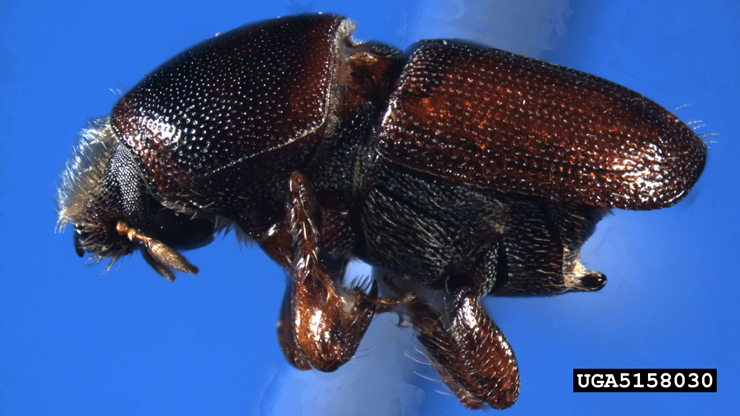
J.R. Baker & S.B. Bambara, North Carolina State University, Bugwood.org
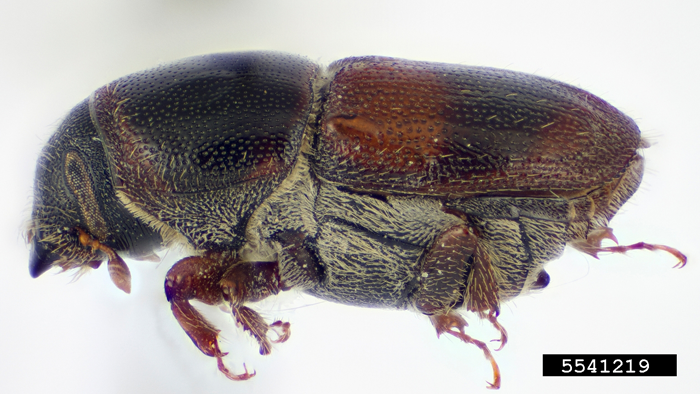
Joseph Benzel, Colorado State University, Bugwood.org
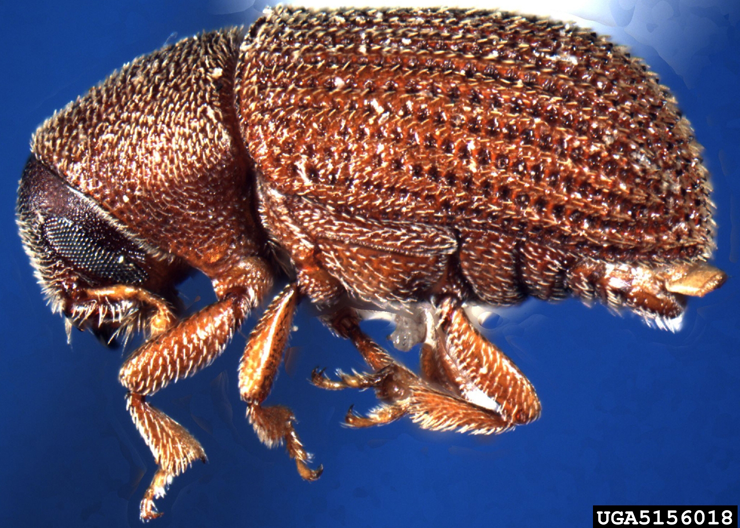
J.R. Baker & S.B. Bambara, North Carolina State University, Bugwood.org
If beetles are present, their emergence holes can sometimes be found on the bark. They are the size of the diameter of a pencil lead. You may also find sawdust on the bark, indicating burrowing beetles. The beetles are an average of 3 mm long.
Figure 10. European elm bark beetle exit hole
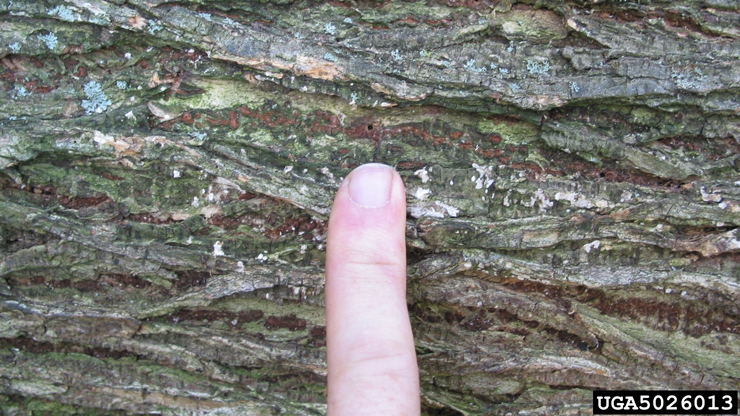
Source: Joseph LaForest, University of Georgia, Bugwood.org
The characteristic pattern of the breeding galleries on the surface of the wood under the bark can also be used to identify these beetles. Smaller European elm bark beetle and banded elm bark beetle galleries are single and run along the grain of the wood. Native elm bark beetle galleries are double and run across the grain.
Figures 11, 12: Native elm bark beetle gallery (left), European elm bark beetle gallery (right)

Joseph LaForest, University of Georgia, Bugwood.org
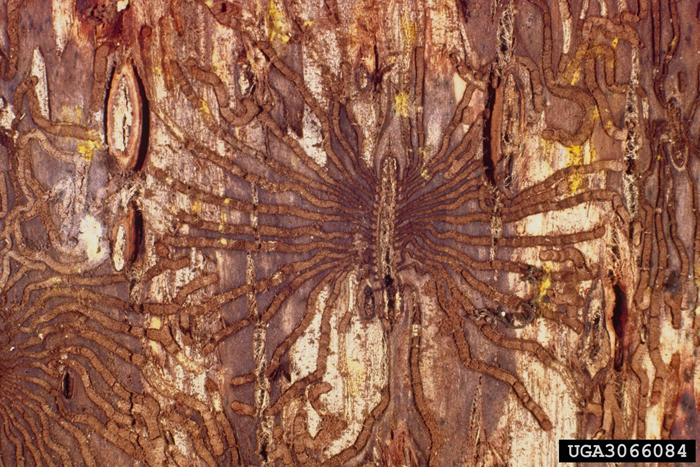
James Solomon, USDA Forest Service, Bugwood.org
Prevention and control
Government, STOPDED and Albertans play an important role in preventing DED from destroying our elm trees:
- find out what federal, provincial and municipal governments are doing
- find out how you can help stop DED
Forms and documents
Legislation
- Agricultural Pests Act
- Pest and Nuisance Control Regulation (PNCR)
- DED Prevention/Control Measures: Responsibilities and Authority under APA
Videos
Form
Publications
- Alberta Dutch Elm Disease (DED) Response Plan
- Province wide elm tree inventory update 2017
- Elm Zigzag Sawfly (Invasive Species Centre)
- Plenodomus tracheiphilus, but not Dothiorella ulmi, causes wilt disease on elm trees in Alberta, Canada
- Update on the Re-evaluation Decision, Chlorpyrifos (Health Canada)
Canadian Food Inspection Agency (CFIA)
- Dutch elm disease (DED) Ophiostoma ulmi and Ophistoma novo-ulmi
- Don't move firewood
- D-97-07 – Phytosanitary requirements for the importation from the U.S. and domestic movement of elm material to prevent the introduction and spread of Dutch elm disease within Canada
- D-01-12 – Phytosanitary requirements for the importation and domestic movement of firewood
Contact
To report suspect DED symptoms or for more information, call:
STOPDED Hotline 1-877-837-ELMS (3567)
For compliance and enforcement issues, contact your local municipality or Agricultural Fieldman.